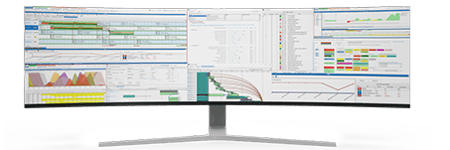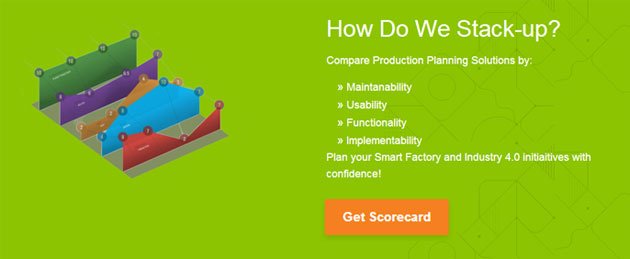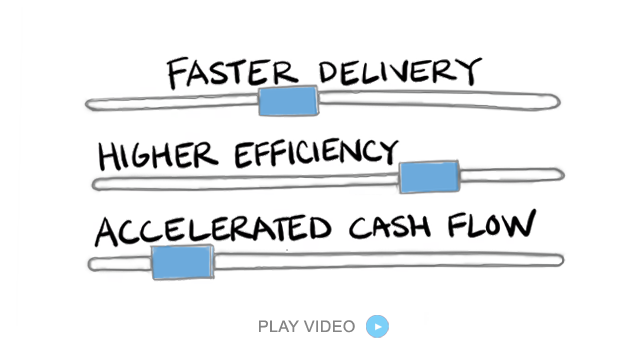
Supply Chain Management: Driving Efficiency and Resilience in Industrial Manufacturing
Supply chain management (SCM) serves as the backbone of operational success in the manufacturing sector. For Operations Directors, managing this intricate web of procurement, production, and delivery processes is a constant balancing act. The challenges are compounded by volatile markets, evolving customer demands, and global disruptions.
However, integrating advanced tools like PlanetTogether with enterprise systems such as SAP, Oracle, Microsoft Dynamics, Kinaxis, or Aveva can redefine supply chain efficiency and resilience.
This blog explores how modern SCM challenges can be addressed through seamless integration, offering practical insights to streamline operations, reduce costs, and enhance decision-making.

The Evolving Landscape of Supply Chain Management
Challenges in Modern Industrial Manufacturing
Industrial manufacturers are increasingly facing:
Global Supply Chain Disruptions: Unpredictable events, such as pandemics or geopolitical tensions, wreak havoc on traditional supply chains.
Demand Variability: Customers expect shorter lead times, high customization, and consistent quality.
Sustainability Pressures: Regulatory frameworks and consumer preferences are pushing manufacturers to adopt greener practices.
Technology Integration: Legacy systems struggle to communicate with advanced planning tools, creating silos that limit real-time insights.
The Need for Integration
Addressing these challenges requires a holistic approach to supply chain management, where real-time data, predictive analytics, and collaborative platforms converge. This is where PlanetTogether shines when integrated with ERP systems like SAP or Oracle and supply chain platforms like Kinaxis or Aveva.


How Integration Elevates Supply Chain Management
Enhanced Visibility
PlanetTogether, when integrated with platforms like SAP, enables end-to-end visibility of the supply chain. This integration allows Operations Directors to:
Track Materials in Real-Time: From raw material procurement to final product delivery, data is synchronized for seamless tracking.
Monitor Key Metrics: Integration consolidates data on inventory levels, production schedules, and transportation updates into a single dashboard.
Proactively Address Issues: With predictive analytics, potential bottlenecks or delays can be identified and resolved before they escalate.
Improved Demand Planning and Forecasting
Demand forecasting is the cornerstone of supply chain efficiency. By connecting PlanetTogether with systems like Kinaxis, manufacturers can leverage:
AI-Driven Predictions: Analyze historical data, market trends, and external factors to forecast demand accurately.
Dynamic Adjustments: Automate adjustments to production schedules and inventory levels based on real-time demand fluctuations.
Collaboration Across Teams: Share insights seamlessly with procurement, production, and logistics teams for unified decision-making.
Optimization of Production Schedules
For Operations Directors, aligning production schedules with supply chain realities is critical. Integration of PlanetTogether with platforms like Microsoft Dynamics or Oracle offers:
Dynamic Scheduling: Synchronize production plans with material availability and delivery timelines.
Constraint-Based Planning: Address machine capacities, workforce availability, and order priorities simultaneously.
Reduced Downtime: Eliminate idle times and inefficiencies by aligning production cycles with supply chain inputs.
Cost and Waste Reduction
A tightly integrated supply chain reduces costs by:
Minimizing Excess Inventory: Real-time inventory tracking eliminates overstocking.
Streamlining Procurement: Automated procurement processes ensure materials are ordered just in time.
Enhancing Sustainability: Reduce waste and carbon footprint by optimizing material usage and logistics.

Key Benefits for Operations Directors
Strategic Decision-Making
With integrated tools, Operations Directors can access a unified platform for data-driven decisions. This holistic view empowers leaders to:
Align supply chain strategies with organizational goals.
Predict and mitigate risks proactively.
Drive innovation by identifying new opportunities for optimization.
Greater Agility and Resilience
In an era of uncertainty, agility is a competitive advantage. Seamless integration fosters:
Rapid Adaptation: Quickly respond to disruptions with real-time updates.
Scalable Solutions: Expand capabilities without overhauling existing infrastructure.
Sustainable Growth: Meet customer demands while adhering to sustainability goals.
Operational Efficiency
Integration eliminates redundancies and streamlines processes, resulting in:
Faster turnaround times.
Reduced operational costs.
Higher productivity across departments.
How to Get Started with Integration
Assess Current Systems
Evaluate your existing ERP, MES, and supply chain tools. Identify gaps that hinder collaboration and real-time visibility.
Define Goals
Set clear objectives for what you aim to achieve through integration, such as improved forecasting, reduced costs, or enhanced sustainability.
Partner with Experts
Work with experienced vendors and consultants to ensure smooth integration. Platforms like PlanetTogether, when combined with SAP, Oracle, or others, require careful alignment of data and processes.
Train Teams
Ensure that all stakeholders understand the capabilities of the integrated system and how to leverage them effectively.
The integration of advanced tools like PlanetTogether with enterprise systems will become a necessity rather than a luxury. By embracing this transformation, Operations Directors can position their facilities to thrive in a competitive market, ensuring efficiency, resilience, and sustainability.
Are you ready to take your supply chain management to the next level? Contact us today to learn more about how PlanetTogether can help you achieve your goals and drive success in your industry.
























LEAVE A COMMENT